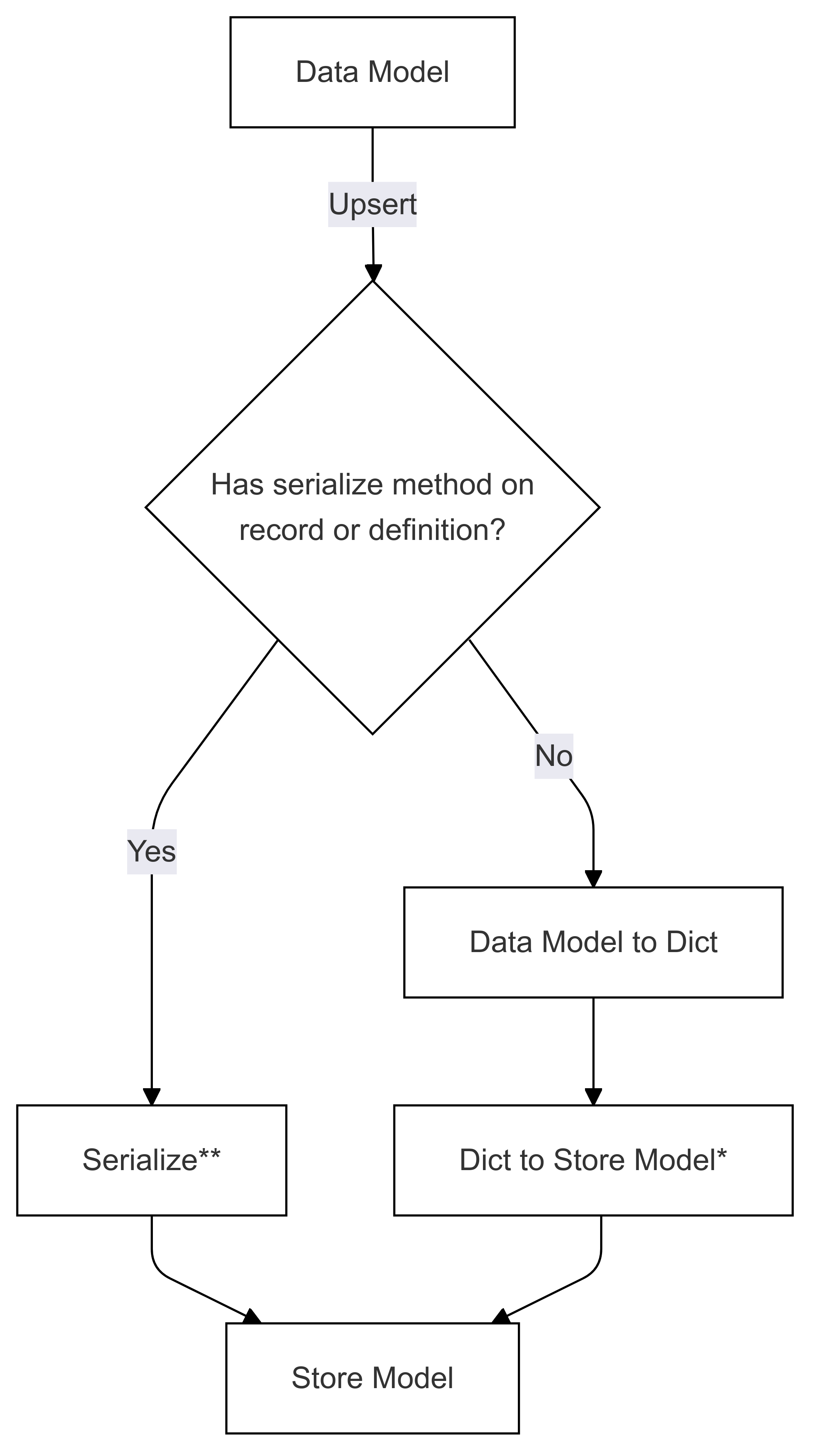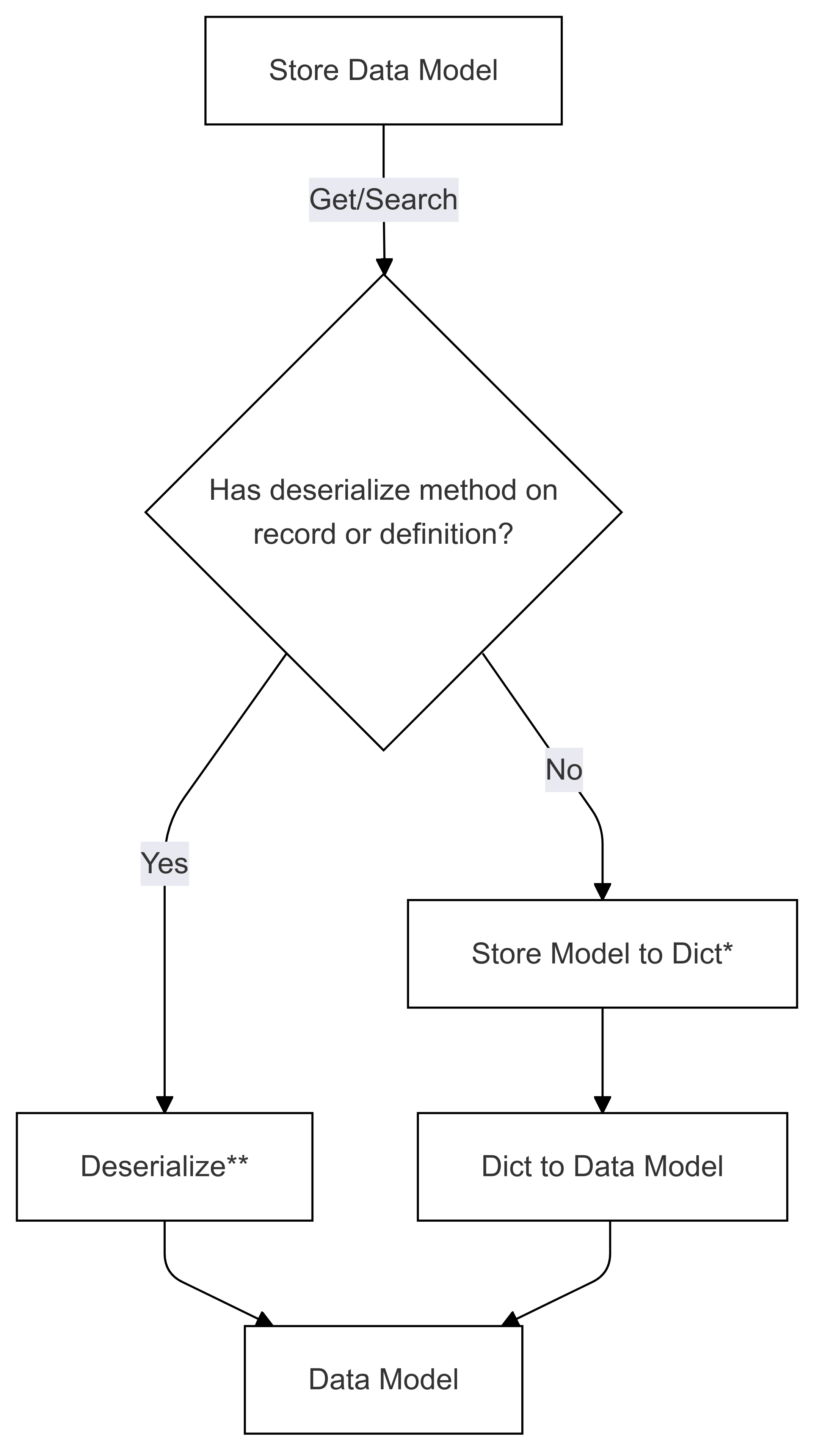Serialization of your data model to and from different stores (Preview)
In order for your data model to be stored in a database, it needs to be converted to a format that the database can understand. Different databases require different storage schemas and formats. Some have a strict schema that needs to be adhered to, while others allow the schema to be defined by the user.
Mapping options
The vector store connectors provided by Semantic Kernel provide multiple ways to achieve this mapping.
Built-in mappers
The vector store connectors provided by Semantic Kernel have built-in mappers that will map your data model to and from the database schemas. See the page for each connector for more information on how the built-in mappers map data for each database.
Custom mappers
The vector store connectors provided by Semantic Kernel support the ability to provide custom mappers in combination with
a VectorStoreRecordDefinition. In this case, the VectorStoreRecordDefinition can differ from the supplied data model.
The VectorStoreRecordDefinition is used to define the database schema, while the data model is used by the developer
to interact with the vector store.
A custom mapper is required in this case to map from the data model to the custom database schema defined by the VectorStoreRecordDefinition.
Tip
See How to build a custom mapper for a Vector Store connector for an example on how to create your own custom mapper.
In order for your data model defined either as a class or a definition to be stored in a database, it needs to be serialized to a format that the database can understand.
There are two ways that can be done, either by using the built-in serialization provided by the Semantic Kernel or by providing your own serialization logic.
The following two diagrams show the flows are shown for both serialization and deserialization of data models to and from a store model.
Serialization Flow (used in Upsert)

Deserialization Flow (used in Get and Search)

The steps marked with * (in both diagrams) are implemented by the developer of a specific connector, and are different for each store. The steps marked with ** (in both diagrams) are supplied either as a method on a record or as part of the record definition, this is always supplied by the user, see Direct Serialization for more information.
(De)Serialization approaches
Direct serialization (Data Model to Store Model)
The direct serialization is the best way to ensure full control over how your models get serialized and to optimize performance. The downside is that it is specific to a data store, and therefore when using this it isn't as easy to switch between different stores with the same data model.
You can use this by implementing a method that follows the SerializeMethodProtocol protocol in your data model, or by adding functions that follow the SerializeFunctionProtocol to your record definition, both can be found in semantic_kernel/data/vector_store_model_protocols.py.
When one of those functions are present, it will be used to directly serialize the data model to the store model.
You could even only implement one of the two and use the built-in (de)serialization for the other direction, this could for instance be useful when dealing with a collection that was created outside of your control and you need to do some customization to the way it is deserialized (and you can't do an upsert anyway).
Built-in (de)serialization (Data Model to Dict and Dict to Store Model and vice versa)
The built-in serialization is done by first converting the data model to a dictionary and then serializing it to the model that that store understands, for each store that is different and defined as part of the built-in connector. Deserialization is done in the reverse order.
Serialization Step 1: Data Model to Dict
Depending on what kind of data model you have, the steps are done in different ways. There are four ways it will try to serialize the data model to a dictionary:
to_dictmethod on the definition (aligns to the to_dict attribute of the data model, following theToDictFunctionProtocol)- check if the record is a
ToDictMethodProtocoland use theto_dictmethod - check if the record is a Pydantic model and use the
model_dumpof the model, see the note below for more info. - loop through the fields in the definition and create the dictionary
Serialization Step 2: Dict to Store Model
A method has to be supplied by the connector for converting the dictionary to the store model. This is done by the developer of the connector and is different for each store.
Deserialization Step 1: Store Model to Dict
A method has to be supplied by the connector for converting the store model to a dictionary. This is done by the developer of the connector and is different for each store.
Deserialization Step 2: Dict to Data Model
The deserialization is done in the reverse order, it tries these options:
from_dictmethod on the definition (aligns to the from_dict attribute of the data model, following theFromDictFunctionProtocol)- check if the record is a
FromDictMethodProtocoland use thefrom_dictmethod - check if the record is a Pydantic model and use the
model_validateof the model, see the note below for more info. - loop through the fields in the definition and set the values, then this dict is passed into the constructor of the data model as named arguments (unless the data model is a dict itself, in that case it is returned as is)
Note
Using Pydantic with built-in serialization
When you define you model using a Pydantic BaseModel, it will use the model_dump and model_validate methods to serialize and deserialize the data model to and from a dict. This is done by using the model_dump method without any parameters, if you want to control that, consider implementing the ToDictMethodProtocol on your data model, as that is tried first.
Serialization of vectors
When you have a vector in your data model, it needs to either be a list of floats or list of ints, since that is what most stores need, if you want your class to store the vector in a different format, you can use the serialize_function and deserialize_function defined in the VectorStoreRecordVectorField annotation. For instance for a numpy array you can use the following annotation:
import numpy as np
vector: Annotated[
np.ndarray | None,
VectorStoreRecordVectorField(
dimensions=1536,
serialize_function=np.ndarray.tolist,
deserialize_function=np.array,
),
] = None
If you do use a vector store that can handle native numpy arrays and you don't want to have them converted back and forth, you should setup the direct serialization and deserialization methods for the model and that store.
Note
This is only used when using the built-in serialization, when using the direct serialization you can handle the vector in any way you want.
Coming soon
More info coming soon.